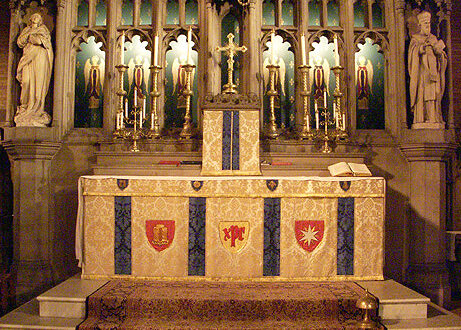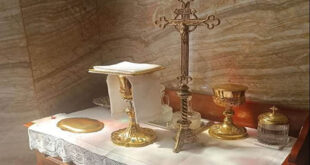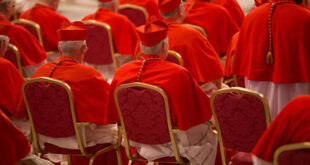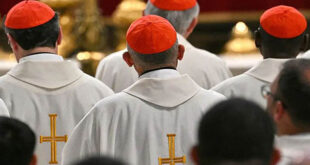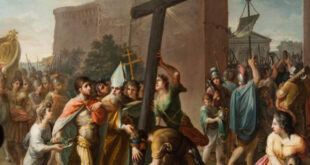Introduction: The Altar, Heart of Catholic Liturgy
At the center of every Catholic church stands the altar—a sacred place that is much more than a physical object. It is the point where heaven touches earth, the space where Christ’s eternal sacrifice on the cross becomes mystically and truly present in every Eucharistic celebration. Consecrated altars speak to us of holiness, history, and a profound symbolism that connects the Church’s tradition with God’s eternity.
But what exactly does a consecrated altar mean? Why is it so special? And what can we, as modern Catholics, learn from this central element of our faith? This article seeks to explore these questions by examining its history, theological significance, and how we can live out this symbolism in our daily lives.
History: The Altar Through Time
1. Biblical Roots: The Altar in the Old Testament
The history of altars dates back to the very beginning of humanity’s relationship with God. In the Old Testament, patriarchs such as Noah, Abraham, Isaac, and Jacob built altars to offer sacrifices to God (Genesis 8:20; 12:7; 22:9). These early altars were simple structures, often made of stone, symbolizing the union between heaven and earth.
The altar also served an expiatory purpose: sacrifices were offered to atone for sins and restore communion with God. For example, in the Temple of Jerusalem, the altar of burnt offerings was where animals were sacrificed according to Mosaic Law. This rite prefigured the perfect sacrifice of Christ on the cross.
Symbolism:
- Stones: Represent God’s stability and eternity.
- Sacrifices: Reflect total surrender to God and acknowledgment of His sovereignty.
2. The Altar in Early Christianity
With the coming of Christ, the concept of the altar took on new meaning. Animal sacrifices were no longer necessary, as Jesus, the Lamb of God, offered a single and definitive sacrifice on the cross (Hebrews 10:10). However, the early Christians retained the use of altars, not for bloody sacrifices but as tables where the Eucharist was celebrated.
During the Roman persecutions, the catacombs became places of worship, and the altars were often the tombs of martyrs. This emphasized the connection between Christ’s sacrifice and the testimony of those who gave their lives for Him.
Symbolism:
- Martyrs’ tombs: The blood shed in union with Christ strengthens the Church’s faith.
- Table of Communion: The altar as a sign of unity in Christ.
3. The Altar in the Medieval and Modern Church
With the legalization of Christianity and the construction of churches, altars began to be more carefully crafted and adorned with precious materials. The Council of Trent reaffirmed the importance of consecrating altars, emphasizing their role as the exclusive place for the sacrifice of the Mass.
Today, in the post-conciliar liturgy, the altar retains its central place, highlighting both its sacrificial function and its communal dimension: it is the table of the Lord’s Supper and the place where the sacrifice of Calvary becomes present.
Theological Significance: The Altar as a Sign of Christ
In Catholic theology, the altar is not just any object; it is a symbol of Christ Himself. The Catechism of the Catholic Church explains this clearly: “The altar is also the table of the Lord, to which the People of God are invited” (CCC, 1182). Christ is both priest, victim, and altar.
Elements of profound meaning:
- The Consecration of the Altar: The act by which an altar is dedicated exclusively to divine worship. This includes anointing it with holy oil, incensing it, and placing relics of saints inside, reminding us of our communion with the triumphant Church in heaven.
- The Altar Cloth: Represents the shroud that wrapped Christ in the tomb.
- Candles: Symbolize the light of Christ that guides His people.
Practical Applications: Living the Symbolism of the Altar
1. A Call to Personal Holiness
Just as the altar is consecrated exclusively to God, Christians are called to consecrate their lives to Him. St. Paul reminds us: “Offer your bodies as a living sacrifice, holy and pleasing to God” (Romans 12:1).
2. The Importance of the Eucharist
The altar invites us to value the Mass as the center of our spiritual life. Actively participating in the Eucharistic celebration is not merely a devotional act but an encounter with Christ that transforms our existence.
3. Creating Domestic Altars
In our homes, we can create small altars to remind us of God’s presence in our daily lives. A crucifix, an image of the Virgin Mary, or a dedicated prayer space can be concrete ways of living out this spirituality.
Conclusion: The Altar as a Sign of Hope
In a world full of distractions and superficiality, the consecrated altar reminds us of what is essential: God is present among us and invites us to unite with Him in an act of supreme love. Every time we approach the altar, we participate in a mystery that transcends time and space, connecting us with Christ and the entire Church, both on earth and in heaven.
May reflecting on the sanctity of consecrated altars renew our faith and our commitment to living as true witnesses of the divine sacrifice in our daily lives.

